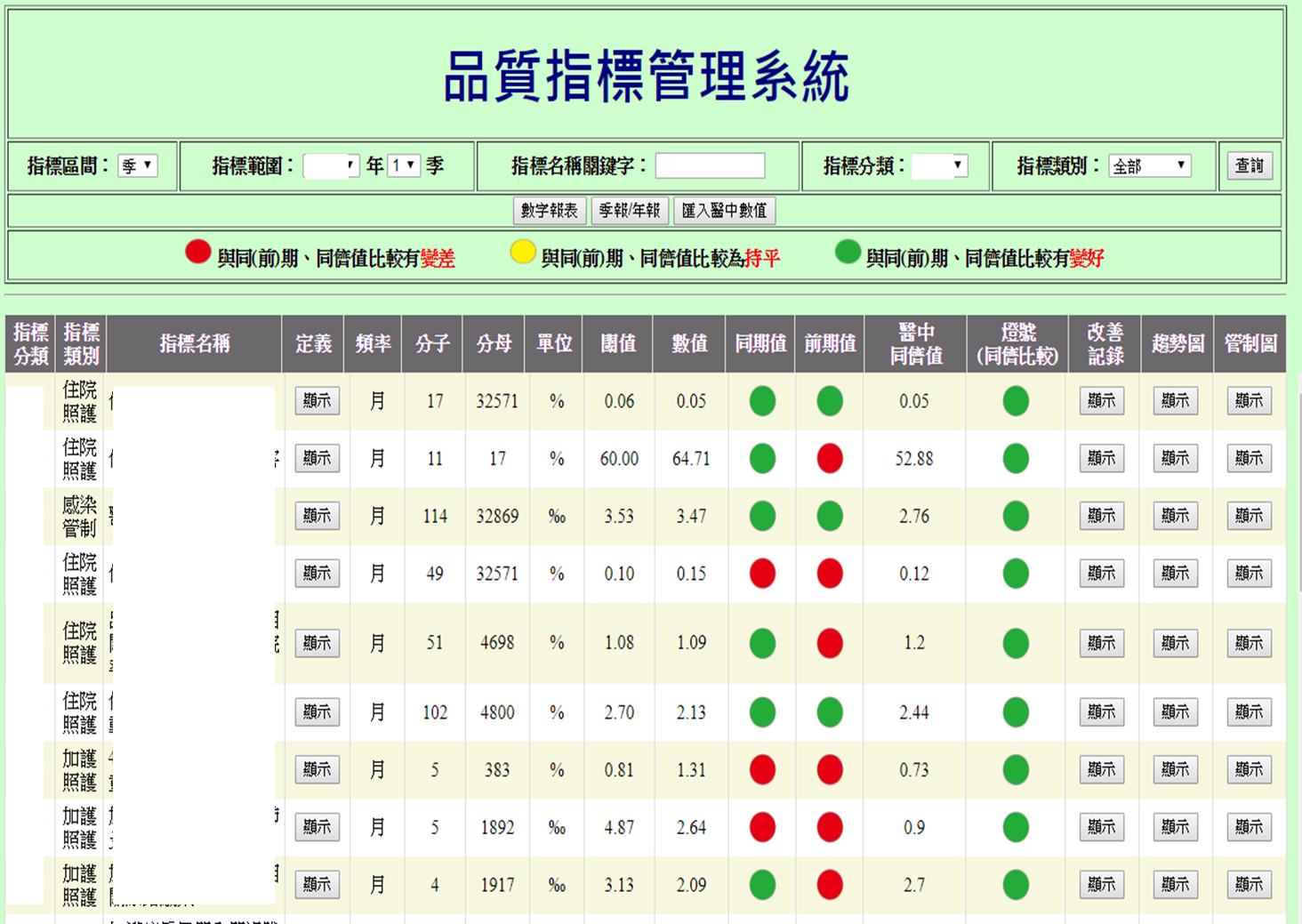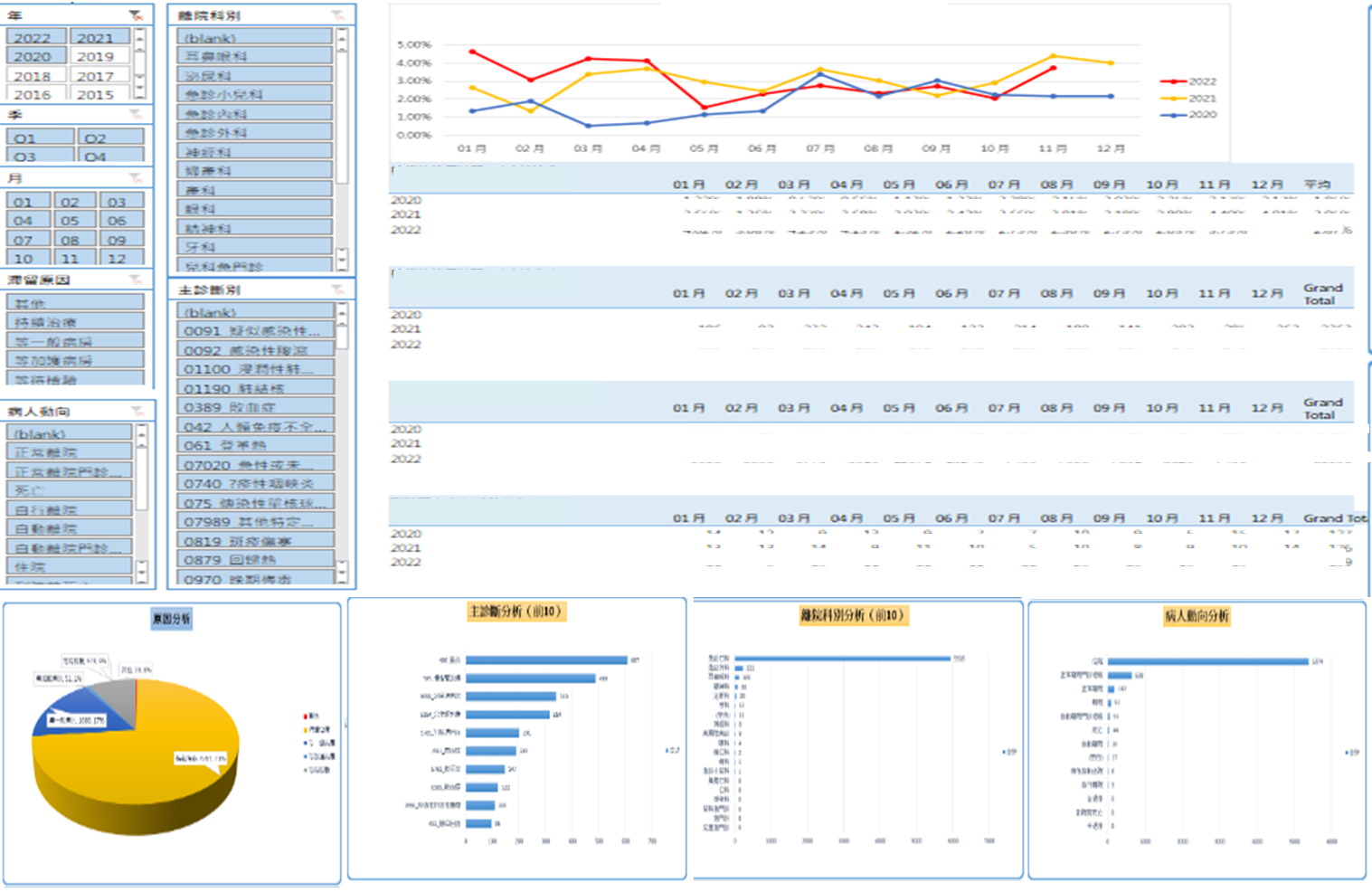Creating a sustainable quality-driven culture with a digital quality-indicator management system
Yun-Ting Tseng, Quality Center Administrator
The quality and safety of a medical environment is dependent on a team culture characterized by continual efforts to improve quality. Therefore, a quality-indicator management system is the optimal tool for cultivating such a culture. National Cheng Kung University Hospital launched a digital quality-indicator management platform (Figure 1) as a systematic management approach for promoting a quality-driven work culture. This platform processes large amounts of medical data to improve accessibility to information on medical team quality and management efficiency. It also systemically integrates large amounts of data from various sources (e.g., outpatient, emergency, and inpatient departments) and establishes a quality-indicator framework for collating data on the medications, treatments, nursing instructions, and postdischarge follow-up of patients. Furthermore, this platform provides physicians and medical team members with a clear overview of the progress of patient care; enables real-time checks and notifications regarding recommended treatments, tests, and the duration of action of medications for individual diseases; and automatically imports new patient data such that data efficiently and accurately reflect real-time medical care quality and that each department can manage their team’s quality indicators on a routine basis. A medical business intelligence system was also used to provide interactive informatics (Figure 2) for quality indicator analysis, and its light indicators measure the performance of peer hospitals and the hospital’s progress with respect to its quality goals; the system allows medical teams to access key data and conduct timely analyses. The digital quality-indicator management platform and the medical business intelligence system simplify the data collection process for clinical teams by substantially reducing the time required for processing and analyzing data, reporting indicator performance, and helping teams to devise consensual improvement plans. These tools facilitate the bottom-up identification of problems and implementation of top-down solutions for systemic problems, encourage cross-team communications and collaborations, create a quality-driven culture within the hospital, improve the quality of medical care, and ensure patient safety. The hospital also won the gold award at the Taiwan College of Healthcare Executive’s Taiwan Healthcare Quality Management contest for its quality-indicator management program entitled “Sharing Cultural Resources and Growing Medical Quality”.

Figure 1. Digital quality-indicator management platform.

Figure 2. Interactive infographics from medical business intelligence system.
